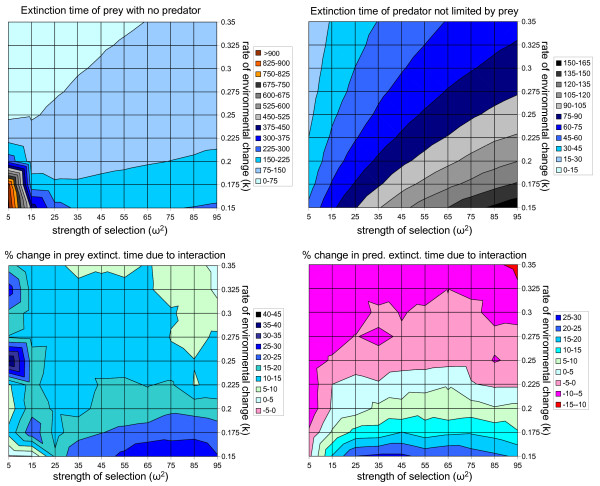Figure 2.
An extensive exploration of the average extinction times in the predator-prey model under different rates of environmental change and strengths of selection. The top panels show the average extinction times of the control populations (i.e., no interaction between predator and prey). The prey is on the left and the predator is on the right. The bottom panels show the percentage change in persistence times for the prey (left) and predator (right) when the predator-prey interaction is included in the model. Blue colors indicate combinations of parameters under which the population persisted longer due to the predator-prey interaction. See methods for the parameter values. I used values of ω2 ranging from 5 to 95, in increments of 10, and values of k ranging from 0.15 to 0.35 in increments of 0.025. The values of k are units of environmental standard deviations for the traits, which are slightly smaller than phenotypic standard deviations in this study. For each combination of parameters, I averaged across 200 runs of the simulation to generate the means depicted in this figure.

